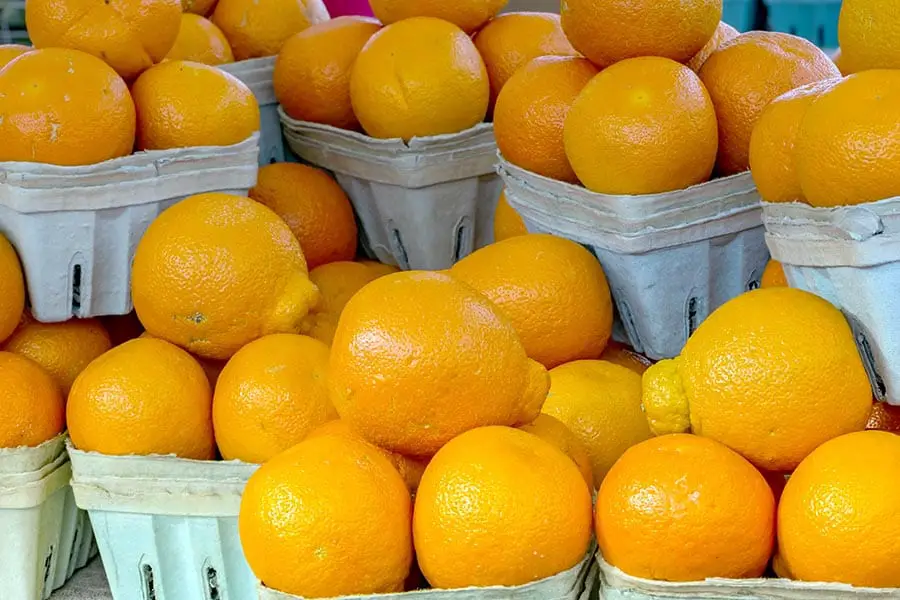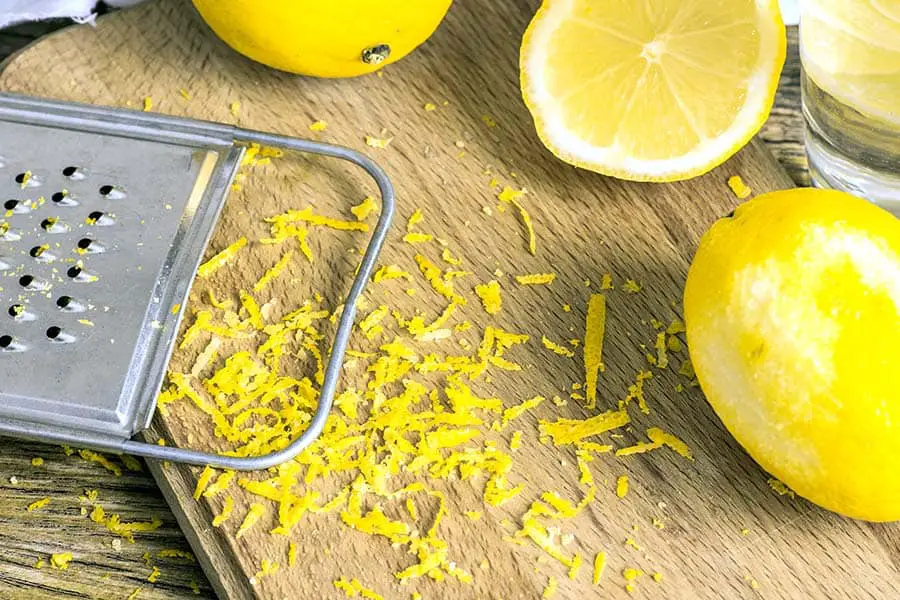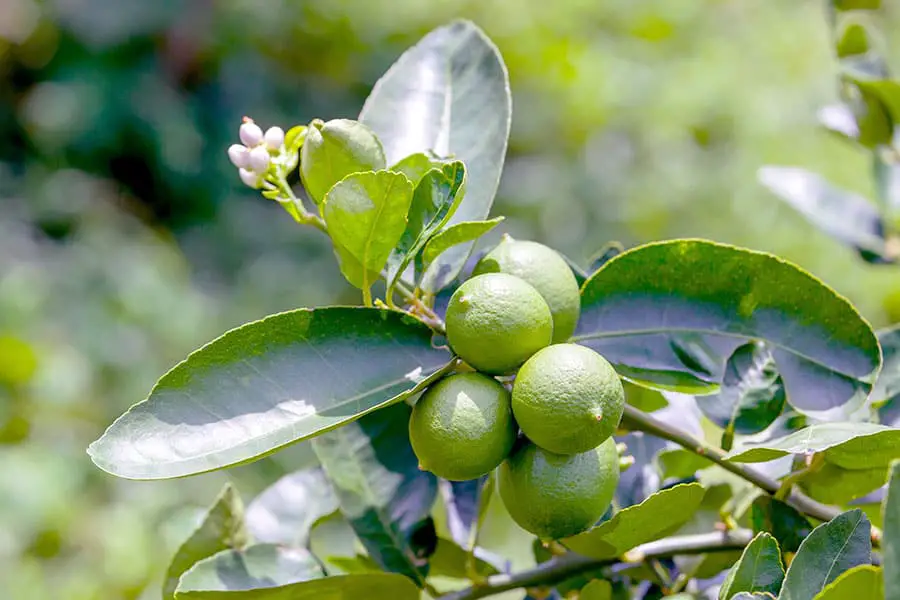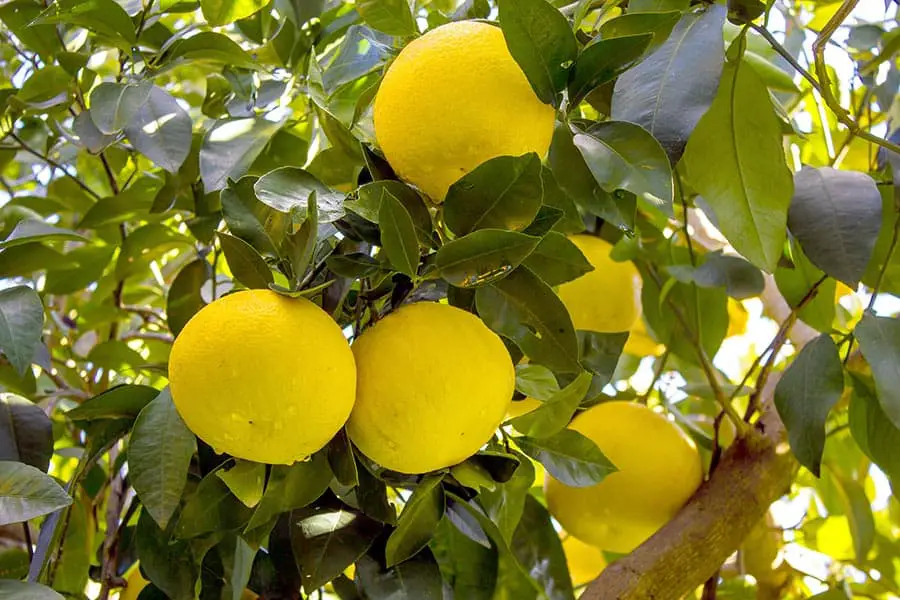
Florida is well-known for producing high-quality, nutritious, and delicious citrus fruits. Lemons, limes, grapefruits, tangelos, and of course oranges are all grown in the groves of the Sunshine State. But what type of citrus grows best in Florida?
Any kind of citrus grows well in Florida. Homeowners can easily grow anything from lemons to tangelos, kumquats, or grapefruits. However, while any type of citrus can grow here, the orange is by far the most popular and successful citrus in Florida, especially the Valencia and navel varieties.
So can regular people grow citrus? When is the best time to plant citrus trees? Are there some places in the state that grow citrus better than others? In the following paragraphs, you will learn more about these questions.
Sunshine State Citrus: An Amateur Growers Guide
If you were to ask someone to name the top three things they think of when they think about Florida, chances are that citrus or oranges are on the list.
While most citrus is grown commercially, plenty of homeowners and residents of the Sunshine State grow their own citrus. Whether it’s a small backyard grove, a potted lime tree in the living room, or a singular grapefruit tree growing in the front yard, Floridians love home-grown citrus.
Here’s everything you need to know to indulge your passion for citrus in your own home.
Oranges
Florida’s favorite citrus might just be the orange, and the best variety of orange for homeowners to grow in Florida is the navel orange.
The navel is good for juicing or eating and is well-regarded even by citrus professionals. Navel oranges grow best in USDA hardiness zones 9-11, but they can grow in zone 8 if well-kept.

Most of the Florida peninsula is considered zone 9 to 10, but the panhandle is zone 8, making it more difficult for Floridians in that region to grow navels.
The best time to plant a navel orange tree in zone 9 is mid-to-late spring. Planting then provides the tree with time to lay roots before the potential frosts come in the fall. For those living in zone 10, where freezes are rare or highly unusual, plant your trees in the fall after the summer heat tapers off.
You’ll want to plant your orange tree at the same depth as it was in its container. You should excavate a hole about twice the size of the tree’s root ball, and fill the hole slowly, adding soil, then water, then letting the mix drain before tamping it down and adding another layer. This procedure helps the roots feel comfortable and get established in their new home.
Phenomenal Florida Fun Fact: 90% of Florida’s orange harvest is destined for the juicer. Only about 10% of the delicious orange orbs grown here are sold as hand fruits.
Navel orange trees enjoy being in sunny places, preferably on the south side of your home. However, navel oranges need at least six hours of sunlight a day and don’t like shade.
Navel orange trees like to be kept well-groomed, so keep any weeds and grasses away from the area beneath the tree’s canopy. In addition, you want to be careful to select a well-drained location for your tree: if saturated in water, navel orange tree roots will rot and die.
Navel oranges are susceptible to frost. Therefore, if a frost is in the forecast, you should protect your tree by covering the ground with burlap, Christmas lights, sheets, or even quilts.
While you might think it silly to water plants before a frost, you absolutely should water your navel orange tree before a frost: this actually helps the soil and foliage retain heat.
Navel orange trees will begin to bloom and fruit at around three years old. The wait, however, is well worth it when you get to stroll out into your yard and pluck a fresh orange off the tree!
Lemons
After oranges, lemons are one of Florida’s most popular citrus crops. People love having fresh lemons in their garden – they’re perfect for when you need fresh lemon juice or zest or when you want to have ready access to lemon oil.
The best lemon to grow in Florida is the Meyer lemon, which grows well in USDA hardiness zones 8-11 – in other words, the Meyer lemon can grow anywhere in Florida!

Meyer lemons, like most Floridians, love the sun. Since they don’t like shade, they should be planted in a very sunny spot with well-drained soil. Like navel orange trees, Meyer lemon trees should be planted in the early spring, after the frost season has passed.
You should be patient with your lemon tree. You’ll likely have to wait a few years for the tree to bloom and fruit. However, the end result is well worth it. There’s nothing quite like the fresh and effervescent smell of a fresh-sliced Meyer lemon!
Other Posts of Interest
- Does Florida Get Tornadoes?
- Why Is The Sunshine Skyway Bridge So Tall?
- Can You Find Sea Glass In Florida?
- What Is Considered The Tampa Bay Area?
Limes
Limes are underrated. Whether you’re making Key Lime Pie, spritzing fresh lime juice onto a tart, or garnishing your afternoon gin & tonic with a twist of lime peel, these lovely green fruits have a distinctive flavor that’s impossible to imitate. Florida has two primary varieties of lime: Persian limes and Key limes.

While both limes are tasty, there are a few important differences between them. Persian limes are slightly more acidic, which gives them a more tart flavor. Key limes have more “lime flavor” without the acidity and tartness that Persian limes bring.
This fact is why Key lime pie is so delicious: it has a pleasant flavor without being super acidic. Persian limes are bigger and contain more juice, so if you’re growing limes for juicing, Persian limes are probably the best choice for you.
Like most citrus, limes grow best in USDA zones 8 through 11. These zones encompass the entire state of Florida, so whether you’re living near Pensacola or Miami, you should be able to grow a lime tree successfully.
Lime trees, both Persian and Key, should be planted in full sun and in soil with good drainage, as standing water is bad for the roots. If the sunniest spot in your yard is prone to flooding or standing water, you can build a mound to plant your tree in, which will help it thrive even in the wettest conditions!
Lime trees are pretty hardy and don’t require much fertilizer. Therefore, the University of Florida recommends that you fertilize your lime trees sparingly. In addition, you should keep the area beneath the tree’s canopy free from grasses and weeds and keep your lawn guy away from it. Injuries caused by bumps from lawnmowers or weed-whackers can kill your lime tree.
Grapefruit
Have you ever had a fresh grapefruit for breakfast, maybe with a bit of sugar sprinkled on top? Imagine being able to walk onto your lanai and pluck a fresh grapefruit whenever you want. Grapefruit grows well in Florida and is an extremely popular citrus fruit.

Unfortunately for people in north Florida, the grapefruit grows best in USDA hardiness zones 9-11, meaning that areas in the Florida panhandle and the northern portions of the state are not ideal for growing this citrus.
If you live in an area that gets frost, you’ll need to be proactive to protect your grapefruit tree: covering it with burlap, blankets, or tarps before a frost helps keep the tree alive and well.
Like most citrus, grapefruit likes plenty of sun and well-drained soil. Ideally, it would be best if you planted your grapefruit tree on the south side of your home, at least 10-12 feet away from any buildings. Grapefruit trees are low-maintenance, apart from needing water about once a week and an occasional pruning of dead or sickly branches.
Best Inground Citrus for Homeowners
What citrus is best for planting in the ground? The answer partially depends on your USDA zone, but really, any citrus tree is a winner. Some people will plant their own little groves with different citrus species to have a variety of fresh fruit available year-round.
If you live in USDA zones 9-11 (Central and South Florida), you can plant any citrus you like. If you live in USDA zone 8 (North Florida), lemons and limes are your best bet. Or, you can grow citrus in a container.
Best Container Citrus
If you have a small yard, border a forest, live in an apartment or condo, or otherwise don’t have the space to plant your own grove, don’t fret. You can grow many varieties of citrus in planters or containers.
Kumquats are a fun little citrus fruit that can be eaten whole, peel and all, and are remarkably delicious. They also make a fine marmalade and can even be added to certain meat dishes to add flavor and tenderize the meat.
If kumquats aren’t your thing, there are many other citrus fruits that thrive in containers. Improved Meyer lemons, mandarin oranges, tangelos, and finger limes are all good citrus fruits to grow in containers.
Florida Citrus: You Can’t Go Wrong
Whether you’re a lifelong Floridian or a transplant to our wonderful state, you should definitely consider growing your own citrus fruit. You can juice them, eat them whole, or use them to make essential oils and household cleaners.
Plus, they’re great gifts for your friends and family who live away from Florida! A box of fresh navel oranges or grapefruits will bring a touch of summer to even the coldest Northern winter.
So wherever you live in the Sunshine State, we’d encourage you to find a sunny spot in your yard, head down to your local nursery, and grab a few citrus trees to spruce up your yard. It might take a year or two for your trees to bear fruit, but that first glass of fresh-squeezed orange juice will be well worth the wait.





